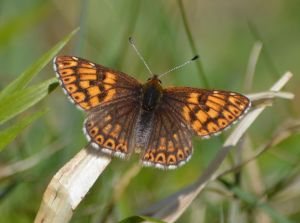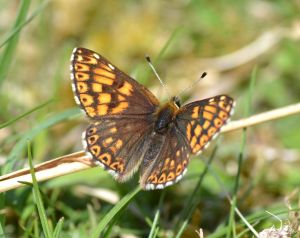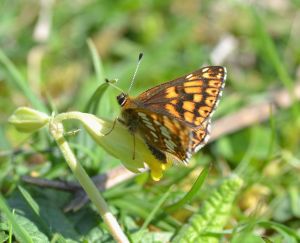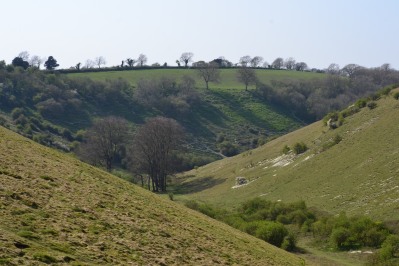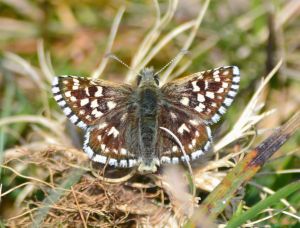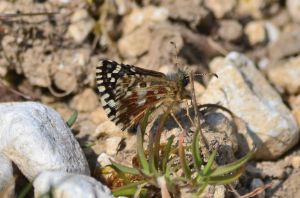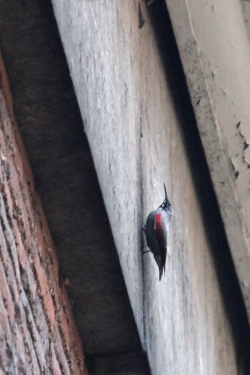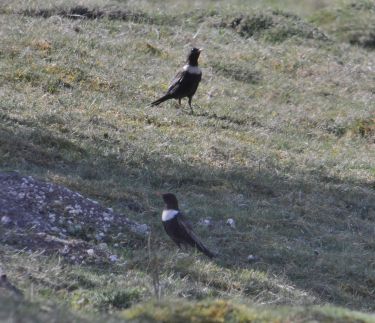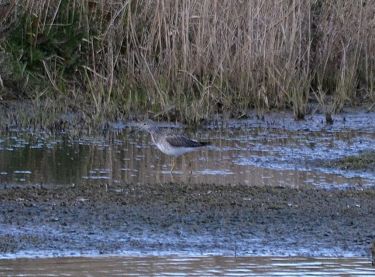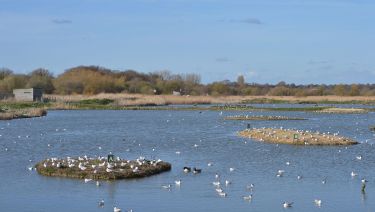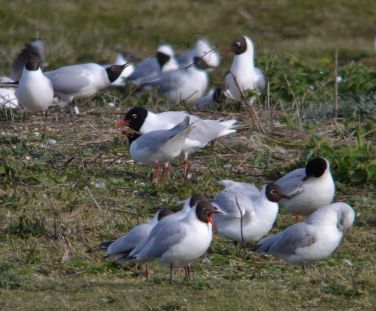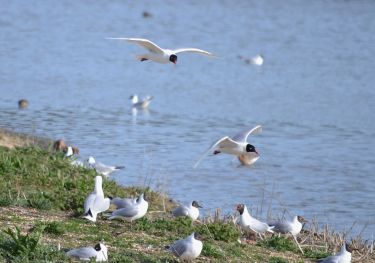Noar Hill is a Hampshire & Isle of White Wildlife Trust reserve where I previously observed Duke of Burgundy in the 2011 and 2013 seasons. The hilltop (SU744319), just south of the village of Selborne, is characterised by former medieval chalk workings that created a patchwork of sheltered hollows and rich chalk scrub habitat (pictured below) ideal for chalk downland butterflies. This year the Dukes, one of Britain’s most vulnerable species, began flying on 15 April and should continue until late May.
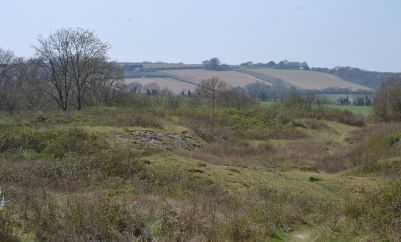 Arriving on site mid-morning I searched those areas with which I was familiar but could find no Dukes. Then I was fortunate to meet Butterfly Conservation’s Hants and IoW co-ordinator Ashley Whitlock who directed me to the new (for myself) location of his one sighting so far on this day. When I reached that spot Ashley and a companion arrived behind me and re-found the butterfly, a male (pictured below).
Arriving on site mid-morning I searched those areas with which I was familiar but could find no Dukes. Then I was fortunate to meet Butterfly Conservation’s Hants and IoW co-ordinator Ashley Whitlock who directed me to the new (for myself) location of his one sighting so far on this day. When I reached that spot Ashley and a companion arrived behind me and re-found the butterfly, a male (pictured below).
Duke of Burgundy are very territorial, so if an observer stays in the place where one is first seen that butterfly will keep coming back. Eventually a second male appeared, challenging the first one. It was now midday and warm sunshine prevailed. I moved on to a chalk pit where I had seen and photographed Dukes two years ago, finding two butterflies in exactly the same spot as then. I believe these were a male and female, the latter being the slightly larger and paler of the genders. Once again these insects kept returning to the same place.
In all I saw five Duke of Burgundy at this site and was told of one other. According to the British butterfly bible Thomas and Lewington this is a typical day’s haul for a downland colony, since adults emerge progressively from mid-April to late May and their average life span is five to seven days.
In the afternoon I moved on another 14 miles or so to Butser Hill NNR (SU716203), the highest point on the chalk ridge of the South Downs. From the reserve car park I walked to the top end of Rake Bottom, a deep dry valley on the western flank of the hill that is a hotspot for Grizzled Skipper. I would guess this spectacular natural feature dwarves the fabled Devil’s Punchbowl on the Oxfordshire Downs by a third as much again in depth (pictured below).
I met a couple here who had walked up the valley from the lower end. They confirmed that the “Grizzles” were the most numerous species present and before long I began to see them as well. Being so tiny they are quite difficult to relocate after they jump out of the way in typical Skipper fashion. But I do not recall seeing so many of this butterfly in one location before. The afternoon was drawing on and I had bought just an hour’s parking time, so resolving to return to this site at some time in the future to see what else might be here, I left.

